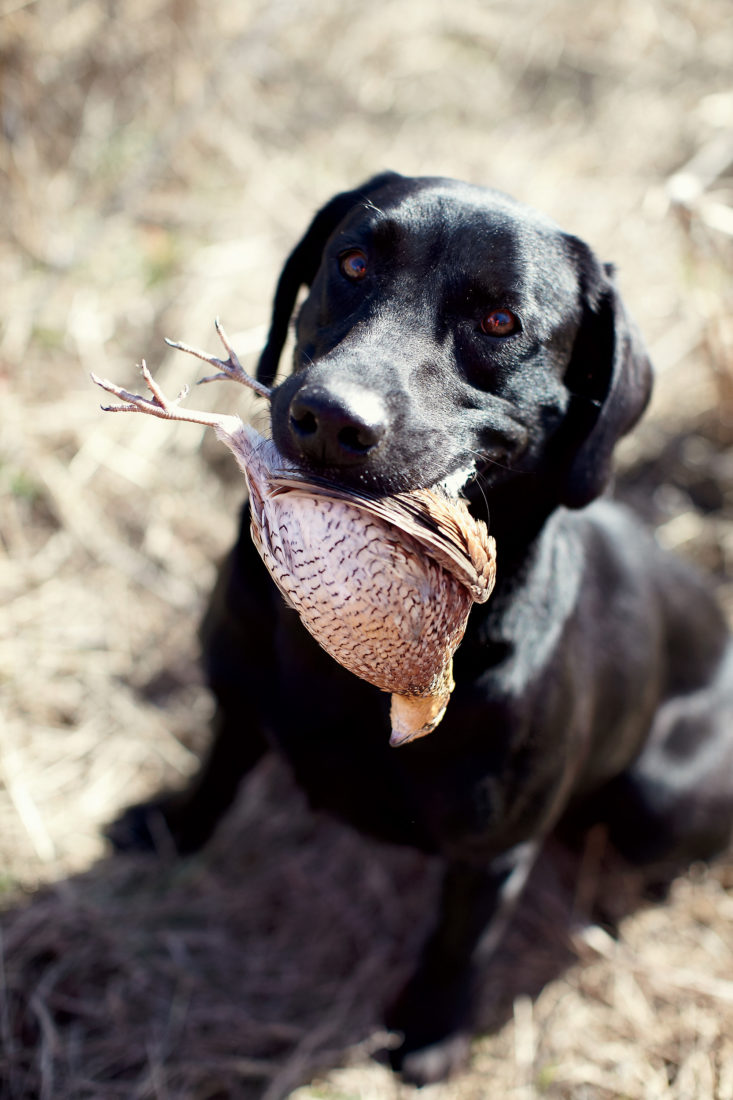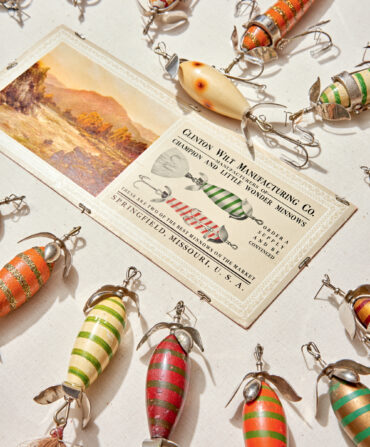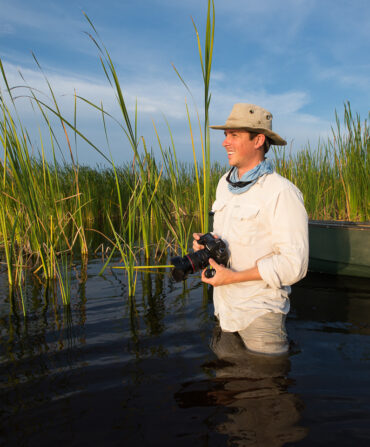“Whoa, Smoke! Whoa, Dixie!”
 Quail guide Wade Meacham is downshifting the UTV with a leather-gloved hand while I’m hanging on, my eyes watching the shotguns fastened firmly in holders. Two bird dogs are locked up tight seventy-five yards away, through rolling pines. “Whoa, you two!” Meacham yells, and two seconds after the wheels stop turning, Bill Webb and I have boots on the ground. I’m edging up behind Dixie, close enough to see her trembling whiskers, when I catch a glimpse of a little white church winking through the trees. It’s such a pastoral idyll, a perfect little set piece of things reverential—steeple and cross, wire grass and pines, dogs and double guns—that I hesitate for a moment to take it in. When the covey rises, it comes as a complete surprise, despite the fact that I am wearing a bird vest and carrying a gun through some of the finest bird country I have ever seen.
Quail guide Wade Meacham is downshifting the UTV with a leather-gloved hand while I’m hanging on, my eyes watching the shotguns fastened firmly in holders. Two bird dogs are locked up tight seventy-five yards away, through rolling pines. “Whoa, you two!” Meacham yells, and two seconds after the wheels stop turning, Bill Webb and I have boots on the ground. I’m edging up behind Dixie, close enough to see her trembling whiskers, when I catch a glimpse of a little white church winking through the trees. It’s such a pastoral idyll, a perfect little set piece of things reverential—steeple and cross, wire grass and pines, dogs and double guns—that I hesitate for a moment to take it in. When the covey rises, it comes as a complete surprise, despite the fact that I am wearing a bird vest and carrying a gun through some of the finest bird country I have ever seen.
Maybe I manage to hit a bobwhite quail or maybe Webb is just being nice, but no matter the particulars, white quail down soon drifts in the sky and the dogs are worming through the brambles and Webb is nodding approval at his guide. “I love a Carolina snowstorm,” Meacham murmurs, watching the feathers fall, and for a moment we are all as quiet as the mice in tiny Mount Pleasant United Methodist Church.

For bird hunters on the Webb Farm, it’s never just about the moment. This 1,200-acre haven of wire grass and longleaf and oak woods and creek bottom has been a working farm in the Webb family since 1906. And for years, Webb, a Rockingham, North Carolina, attorney, has been painstakingly crafting his land to honor and replicate the little-remembered glory days of North Carolina quail hunting.
 Unlike the history of quail shooting on the plantations of southern Georgia and northern Florida, the historic quail-hunting culture of North Carolina’s rolling Piedmont has been largely forgotten. From the 1890s through the 1940s, scores of quail plantations covered tens of thousands of Tar Heel acres. Daily railroad stops in Thomasville—that’s North Carolina, not Georgia—and Greensboro funneled wealthy Northerners to some of the best bird hunting in the South. At the time, the hunting plantations in central North Carolina were every bit as ostentatious, and the social life every bit as refined, as on the Red Hills plantations in the deeper South. In Thomasville, one quail plantation boasted a twenty-room clubhouse directly across from the train station, and thirty-six acres of kennels. Admiral Robert Peary hunted there. William Gould Brokaw, grandson of the “robber baron” Jay Gould, ran a 30,000-acre quail spread in the area. Frank Fleer, inventor of bubble gum, owned a massive quail plantation here. J. P. Morgan built a sprawling lodge in the region with as many as 26,000 acres of leased ground. His friends shot 10,000 wild quail a year—a feat made easier with mule-drawn carts for both men and dogs. There were racetracks, polo fields, golf courses, and trapshooting. In an average day of hunting, gunners expected to put up eighteen to forty wild coveys.
Unlike the history of quail shooting on the plantations of southern Georgia and northern Florida, the historic quail-hunting culture of North Carolina’s rolling Piedmont has been largely forgotten. From the 1890s through the 1940s, scores of quail plantations covered tens of thousands of Tar Heel acres. Daily railroad stops in Thomasville—that’s North Carolina, not Georgia—and Greensboro funneled wealthy Northerners to some of the best bird hunting in the South. At the time, the hunting plantations in central North Carolina were every bit as ostentatious, and the social life every bit as refined, as on the Red Hills plantations in the deeper South. In Thomasville, one quail plantation boasted a twenty-room clubhouse directly across from the train station, and thirty-six acres of kennels. Admiral Robert Peary hunted there. William Gould Brokaw, grandson of the “robber baron” Jay Gould, ran a 30,000-acre quail spread in the area. Frank Fleer, inventor of bubble gum, owned a massive quail plantation here. J. P. Morgan built a sprawling lodge in the region with as many as 26,000 acres of leased ground. His friends shot 10,000 wild quail a year—a feat made easier with mule-drawn carts for both men and dogs. There were racetracks, polo fields, golf courses, and trapshooting. In an average day of hunting, gunners expected to put up eighteen to forty wild coveys.
And it wasn’t just the rich and refined who got a shot at some of the best quail hunting the South has ever known. “A lot of the farmers around here would guide for the wealthy folks once they got the crops in,” Webb recalls. “But all of my hunting was blue-collar quail hunting. You had yourself a dog, and it was a bird dog or a rabbit dog or a squirrel dog, depending on what you were after!”
But it wasn’t until Webb returned home to Rockingham after graduating from Wake Forest law school in 1978 that he saw his childhood in a fuller context. “I hadn’t realized what a special life I’d had,” he says. “So my intention is to give other people a taste of that—a legacy North Carolina quail hunt. It’s a shame that it takes a lot of money to re-create what once happened naturally. But I’m lucky to be able to do it.”

My buddy George Dixon and I do our best to help with the preservation effort. We hit the woods after an overnight stay that would have impressed even the most pampered Roaring Twenties industrial titan. The Webb Farm loads down a Southern groaning board with the likes of pear tarts with balsamic figs, buttermilk-fried quail with sugar-glazed prosciutto, and lobster macaroni and cheese. We had the run of the farm lodge, built in 2006 but designed with the deep porches and floor-to-ceiling windows of a nineteenth-century farm home.
Other than the upscale lodging and meals, however, “we hunt pretty much the way my dad and uncle hunted,” Webb figures. “They’d head out in a six-banger blue-and-white Willys Jeep and roll along slowly. They’d let the dogs work and get out for the flush.” Webb has traded up from Willys Jeeps to Kawasaki Mules, and in addition to English pointers, Meacham brings along Irish-bred Labrador retrievers to use as flushing dogs. “Calm at your feet, but hell in the field,” Meacham says. “You put a pair of Labs in that brush and the birds hear them coming. The flushes are big and boisterous, and the birds are up and high and moving on. It’s so much more sporting. Real wing shooters go crazy for it.”
Webb likes “big-ranging dogs,” as he describes them, and we chase fur through waist-high grass and soaring pines. While the spunk of bobwhite quail at many commercial preserves is often lacking, birds on the Webb Farm seem bound and determined to make it to the end of the season. We put up both wild coveys and preserve birds, and nearly every bobwhite makes a frantic break for blue sky. The energy level of his preserve-raised birds, Webb is convinced, comes from his use of an outdoor quail brooder called the Surrogator. From the time they are a week old, his quail live outdoors in flight pens and are gradually released into the wild. “By October, these are as close to wild birds as you’re going to get,” he says. “They are hardy as horses, fly in any weather, and stay coveyed up because we don’t shoot them down.”

Photo: Stacey Van Berkel
Field Feast
Fresh quail from the wilds of Webb Farm.
Not that Dixon and I don’t try, and everywhere we shoot, there’s a story to go along with a statuesque point. We shoot quail in fields that were once thick with the family’s peach orchards. We shoot quail in the field Webb planted with Silver Queen sweet corn when he was a teenager. “I sold that corn to the produce man in town,” he says, laughing, “and bought a 1969 Plymouth GTX!” And we shoot quail in the woods by the Methodist church. It’s where Webb went to worship, and the preacher was none other than Wade Meacham’s father. “Every Sunday,” Webb says, “I heard Scripture, Robert Frost, and bird hunting from the pulpit. And I can tell you this: There’s nothing else that’s ever been like it.”
And nothing else quite like a hunt here today. After a string of impressive doubles, Dixon wings a bird that tumbles into river cane and bramble. The Irish Lab Finn runs it down, the eight-foot cane shaking like a herd of warthogs is headed our way. “Good boy, good boy,” Dixon says. “That makes me a better hunter than I deserve to be.”
I’m not sure I’d agree with Dixon’s self-assessment, but it’s hard to hunt at the Webb Farm without feeling that you’re experiencing something that you might just barely merit. I quit counting covey rises at fourteen. I quit tallying hits and misses, quit feeling for the weight of birds in my vest. There is too much to keep track of, too many memorable elements—the dogs in the wire grass, the rattle of pots in a country kitchen, and Dixon’s run of doubles. Each moment is connected to another, each connected to the generations of family that have nurtured this land, each dog point and covey rise another part of the story that one son of the son of a bird hunter continues to write.








